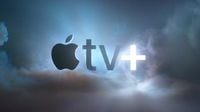Apple TV+ subscribers in the United States were met with a jolt this week as the tech giant announced a significant price hike for its streaming service, raising the monthly cost from $9.99 to $12.99. The increase, which took effect immediately for new subscribers as of August 22, 2025, will hit existing users in their next billing cycle, according to reports from 9to5Mac, Tom’s Guide, and Variety. This marks the third price jump for Apple TV+ since its 2019 debut, when it launched at a modest $4.99 per month.
For many viewers, the news came as an unpleasant surprise. Social media channels and online forums quickly filled with reactions ranging from disappointment to outright frustration. One subscriber, quoted by Tom’s Guide, summed up the sentiment: “Thank you for reminding me to cancel Apple TV!” Others shared tips on how to minimize streaming costs, such as subscribing only for a month or two to binge-watch favorite shows before canceling again. “With the cost of everything going up, it’s just easier subscribing for a month or two at a time and binge watch your favorite shows on all these different apps,” one Reddit user explained.
The timing of Apple’s announcement is notable. The company is gearing up for a busy fall season packed with new premieres. Season 4 of The Morning Show is set to debut on September 17, followed by Season 5 of Slow Horses on September 24. Fans of acclaimed showrunner Vince Gilligan will see his new series Pluribus arrive on November 7, while original films like Highest 2 Lowest (September 5) and The Lost Bus (October 3) are also on the horizon. These additions are part of Apple’s ongoing effort to expand its library with premium content across genres, from feel-good comedies to epic sci-fi, family programming like the Peanuts specials, and live sports including Major League Baseball’s “Friday Night Baseball” and Major League Soccer coverage.
Apple’s justification for the price increase is twofold. First, the company points to its ad-free viewing experience—a rarity in today’s streaming landscape. In a statement to Variety, Apple said, “Since its launch, Apple TV+ has expanded its deep library of hundreds of Apple Originals, with thousands of hours of premium programming across genres and brand-new releases weekly — all ad-free.” Second, Apple highlights its investment in critically acclaimed content, which has garnered industry recognition. This year, Severance led the Emmys with 27 nominations, and Seth Rogen’s The Studio made history as the most-nominated freshman comedy with 23 nods.
Despite these accolades, Apple has not disclosed specific subscriber numbers for Apple TV+. However, during its most recent earnings call, the company reported that overall viewership for the service grew by a “strong double digits year over year.” Yet, the financial burden of maintaining such a high-quality, ad-free library is substantial. According to Tom’s Guide, Apple reportedly loses over $1 billion annually on Apple TV+ due to its steep spending on premium content.
It’s not just Apple feeling the pinch. The streaming industry as a whole has been grappling with rising costs and a push toward profitability. In 2025 alone, several major platforms have raised their prices. NBCUniversal’s Peacock increased all its subscription tiers by $3 in July, with its ad-supported tier now costing $10.99 per month. Paramount+ raised its monthly fee by $1 earlier in the year, while Netflix and Discovery+ both implemented price hikes in January. Disney+ and Max have also upped their rates on ad-free tiers, as reported by multiple outlets. Even as streaming services compete fiercely for subscribers, the era of bargain-basement prices appears to be fading fast.
For Apple, the latest price hike is also a strategic move to boost subscribers for its Apple One bundle, which combines Apple Music, Apple TV+, Apple Arcade, and iCloud storage. Notably, the monthly and annual plans for Apple TV+ included in Apple One will remain at their current prices for now, offering a potential value alternative for consumers looking to access multiple Apple services at a lower combined cost.
Still, the backlash among subscribers has been palpable. Many users, especially those who have enjoyed the service since its $4.99 launch, are rethinking their loyalty. Some joke about never having actually paid for the service, thanks to free trial offers and bundled deals. Others, like Tom’s Guide’s Malcom McMillan, are blunt about their willingness to pay: “I struggle to see why people should pay $13 a month for the streaming service. I certainly wouldn’t. I’d simply sign up for the month(s) when ‘Slow Horses’ is on, and then cancel once it’s over.”
The growing trend of “churn”—where subscribers hop in and out of services based on content availability—reflects a changing dynamic in the streaming world. With so many platforms vying for viewers’ attention, and with prices rising across the board, consumers are becoming more selective. Guides on how to prioritize or cancel streaming subscriptions are now commonplace, and Apple’s move may accelerate this behavior.
Apple’s emphasis on an ad-free experience remains a selling point, especially as more competitors introduce advertising to offset costs. But if prices continue to climb, even the most devoted fans of shows like Severance and Slow Horses may be forced to reconsider whether the service is worth the premium. For now, Apple TV+ continues to offer a robust slate of original programming and live sports, but the company will need to balance its ambitions with the realities of a price-sensitive audience.
As the streaming wars intensify, Apple’s latest move is a clear signal that the golden age of cheap, ad-free streaming may be coming to an end. Whether subscribers will stick around for the ride—or decide to jump ship—remains to be seen.

